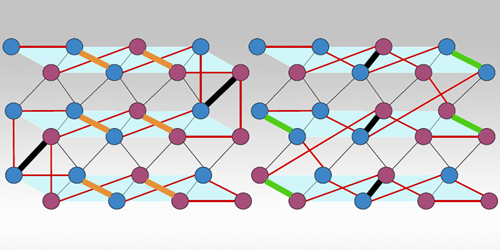Gaining a Quantum Advantage Sooner than Expected
“Quantum supremacy” is reached when a quantum computer solves a problem that’s intractable for even the fastest classical computer. Claims that this has been demonstrated provoke heated debate, but even doubters agree that reaching this point is only a matter of time. For a benchmark problem called the Fermi-Hubbard model, a team at Phasecraft Ltd, UK, and the University of Bristol, UK, have found that those holding out for a more convincing demonstration might be satisfied sooner than expected [1]. The team showed that a next-generation quantum computer could solve a version of the Fermi-Hubbard model that is too complex for classical methods.
The Fermi-Hubbard model describes the behavior of fermions (such as electrons) hopping between sites in a solid. Classical computers can calculate the system’s ground state for simple cases, but the computational cost becomes prohibitive when more than a few tens of particle positions are considered. Using a classical numerical approach, the team simulated a hybrid quantum-classical algorithm—the variational quantum eigensolver (VQE)—applied to a relatively simple case of 12 fermionic sites. Their simulation incorporated every aspect of how the VQE would be implemented in reality, including noise, errors, and a method to measure the output of the 1400 quantum gates necessary to tackle this baseline case. Extrapolating their results to more complex cases, the researchers found that “quantum advantage” (a less controversial term gaining currency among researchers) over classical computers could be achieved using about 8000 gates—a tenth of the number previously thought necessary. Today’s best systems already have more than enough qubits to form these gates, but they cannot yet string them into sufficiently complex circuits.
–Marric Stephens
Marric Stephens is a Corresponding Editor for Physics Magazine based in Bristol, UK.
References
- C. Cade et al., “Strategies for solving the Fermi-Hubbard model on near-term quantum computers,” Phys. Rev. B 102, 235122 (2020).




